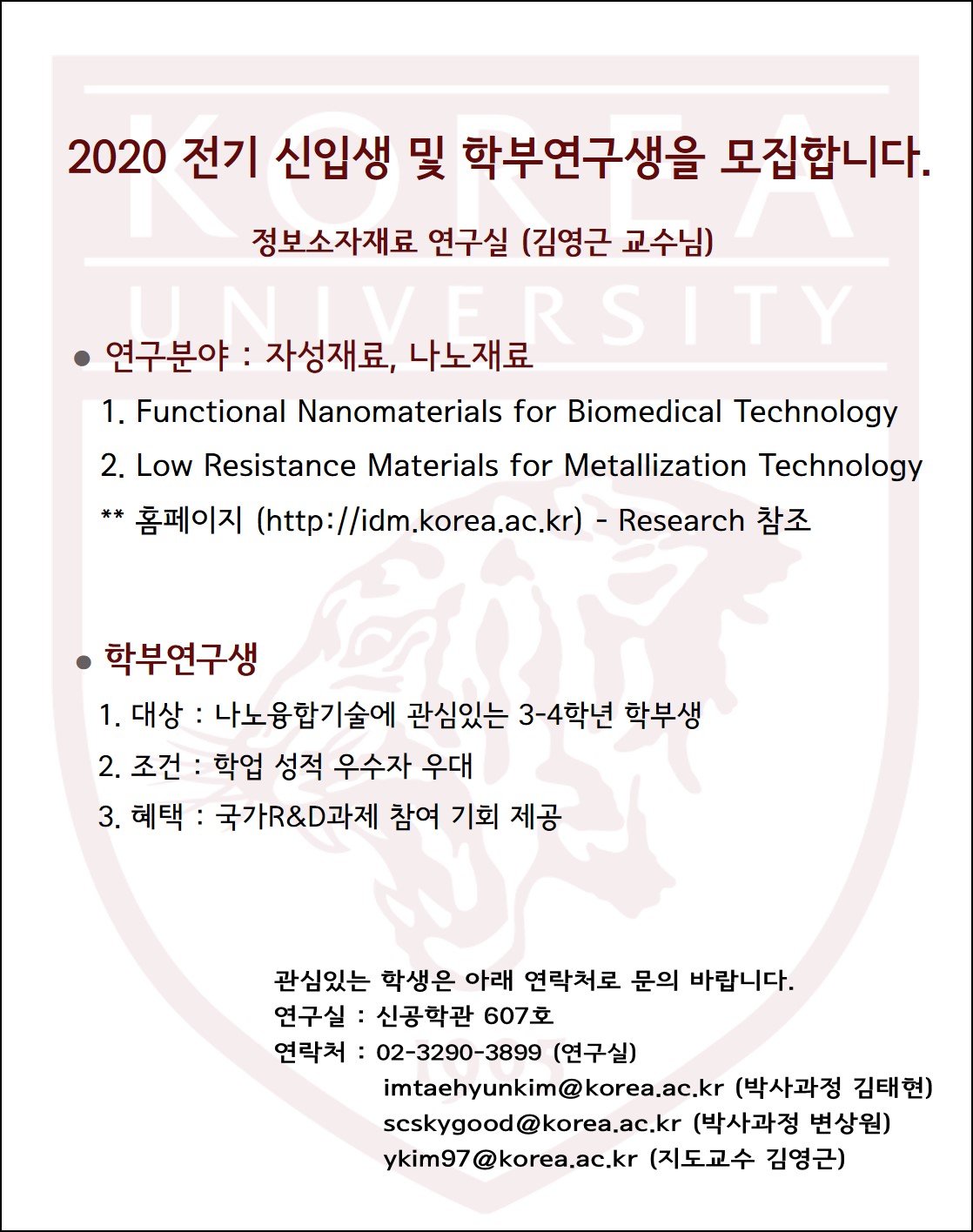
국내 연구진이 차세대 메모리로 불리는 자기메모리의 상용화를 한 단계 앞당긴 연구 성과를 내놨다.
김영근 고려대 신소재공학부 교수와 같은 학과 이민혁 연구원 공동 연구진은 차세대 자기메모리의 전류를 저감할 수 있는 소재 기술을 개발했다고 15일 밝혔다.
자성메모리는 자석 성질을 갖고 있는 물질과 그렇지 않은 물질이 차곡차곡 쌓인 형태로 이뤄져 있다. 자성층의 자성 방향, 즉 N극과 S극이 바뀌면서 정보가 저장되는데 이처럼 N극과 S극을 바꾸는 기술을 `스핀궤도토크`라고 한다. 그런데 스핀궤도토크를 위해서는 기존 메모리 대비 5배 이상 많은 전류를 흘려줘야만 했다. 그만큼 비용이 증가해 상용화의 걸림돌로 작용했다. 김 교수 연구진은 자성메모리를 구성하고 있는 층 사이에 텅스텐 기반의 소재를 넣음으로써 전류를 낮추는 데 성공했다.
Large reduction in switching current driven by spin-orbit torque in W/CoFeB heterostructures with W–N interfacial layers
Acta Materialia 200, 551–558 (2020) [doi: 10.1016/j.actamat.2020.09.032]
Injecting an electrical current into a nonmagnetic layer toward the in-plane direction can reverse the magnetization direction of an adjacent ferromagnetic layer in a nonmagnet/ferromagnet heterostructure via spin-orbit torque (SOT). One of the most critical issues for memory and logic device applications is to reduce the critical current to assure low energy consumption. Herein, we report both enhanced SOT effi- ciency and reduced SOT-induced switching current in perpendicularly magnetized W/CoFeB heterostruc- tures, where ultrathin tungsten nitride (W–N) layers with various N-compositions and thicknesses are placed in between W and CoFeB layers. The composition of the W–N layers affects the microstructure and, therefore, the electrical properties. The measured SOT efficiency is 0.54, and the switching current reduces to approximately one-fifth of its original value in the 0.2-nm-thick W–N layer sample containing 42 at% N. Our results suggest interface engineering is a practical approach to reduce switching current.
이새봄, "[과학] 속도·에너지 극대화 `자기메모리` 상용화 성큼", 매일경제, 2020년 12월 16일, https://www.mk.co.kr/news/it/view/2020/12/1288460/


